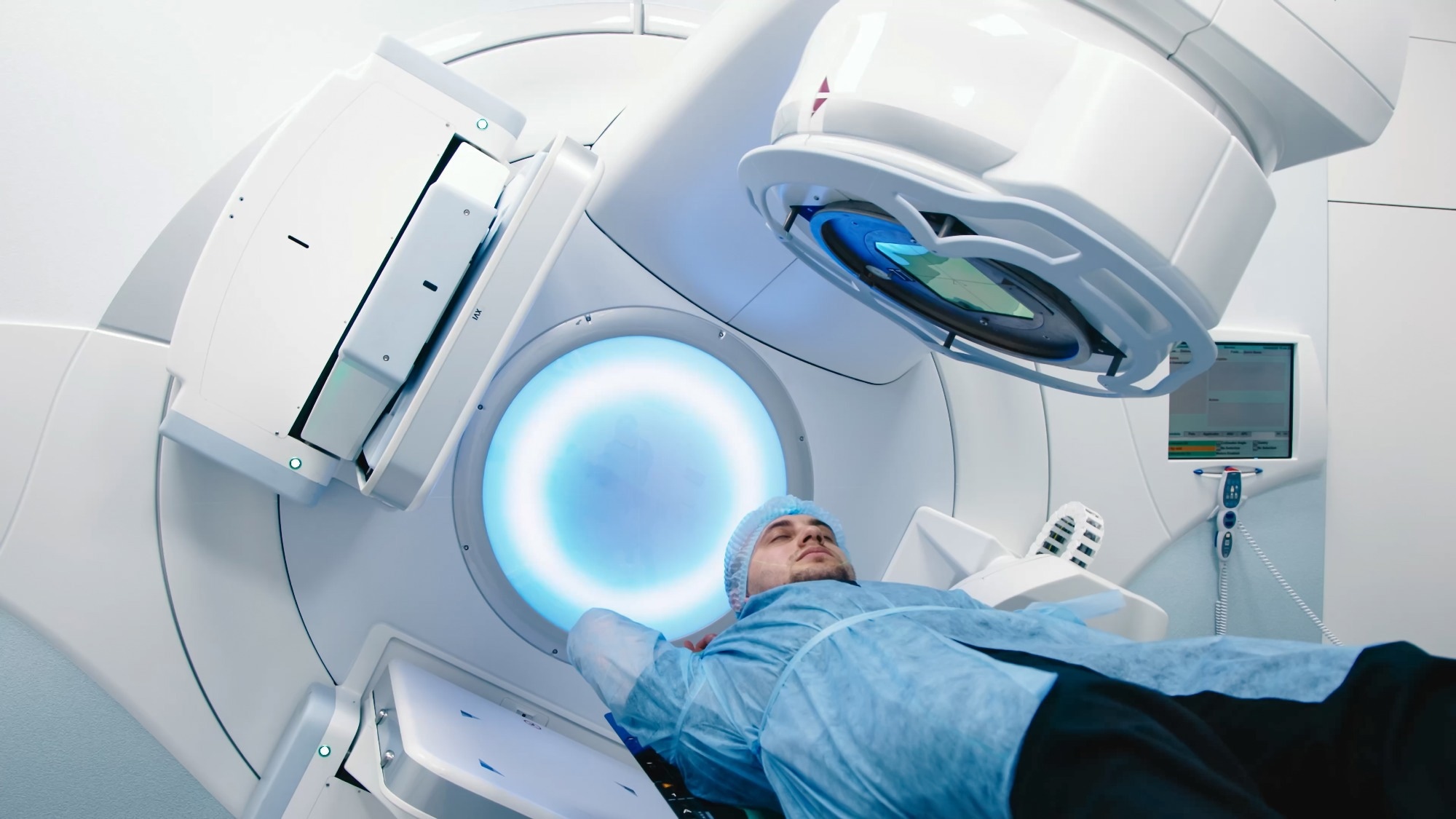 By Pooja Toshniwal PahariaReviewed by Lauren HardakerAug 14 2025
By Pooja Toshniwal PahariaReviewed by Lauren HardakerAug 14 2025In a recent study published in Frontiers in Oncology, researchers evaluated whether combining adaptive ultra-low-dose radiation therapy (ULDRT, 4.0 Gy, with retreatment as needed) and rituximab could effectively treat indolent B-cell non-Hodgkin lymphomas (iNHLs) while minimizing toxicity. This approach may lower treatment-related side effects and drug toxicities, offering a milder yet effective alternative for iNHL management.
 Image credit: wedmoments.stock/Shutterstock.com
Image credit: wedmoments.stock/Shutterstock.com
Indolent, slow-growing non-Hodgkin lymphomas (NHLs) are the most common type of NHLs. While focal radiation treatment (RT) effectively controls localized disease, relapse at distant sites is common. Chemotherapy offers broader control but carries higher toxicity. Rituximab, a monoclonal antibody targeting CD20 on malignant B cells, enhances immune-mediated destruction and induces apoptosis.
Although RT and rituximab are effective individually, few studies have explored their combined use. Existing evidence shows improved long-term progression-free survival when RT is co-administered with rituximab in Grade I–II follicular lymphomas, but past regimens used high radiation doses (30–40 Gy), linked to acute effects such as skin damage, nausea, and fatigue, as well as more acute and long-term RT toxicities. These limitations underscore the need for treatment strategies that maintain efficacy while reducing radiation exposure and associated toxicities.
About The Study
In the present study, researchers explored the synergistic effects of rituximab administration with adaptive ULDRT on the therapeutic outcomes of iNHLs, particularly local and distant disease control and toxicity.
The sample population consisted of 26 iNHL patients (21-87 years) receiving ULDRT and rituximab infusions (375 mg m-2 weekly for four weeks). Between 2017 and 2024, they received both treatments concurrently or a median of 16 days apart. Radiation therapies included intensity-modulated RT (IMRT) or three-dimensional conformal RT.
The primary study outcomes were in-field and outside-field disease control based on treatment response. The researchers defined local control based on partial (PR) and complete response (CR) using the Lugano criteria. They assessed the overall response rate (ORR) based on the CR and PR. Non-responding individuals developed stable or progressive illness. Secondary outcomes were progression-free survival (PFS), overall survival (OS), symptomatic improvement, and toxic effects.
Positron Emission Tomography-Computed Tomography (PET/CT) indicated response to treatment and disease control. Biopsy investigations confirmed iNHL cases. Kaplan-Meier statistics provided the PFS and OS rates. The Common Terminology Criteria for AEs (CTCAE) indicated acute and chronic toxicities.
Six patients had prior systemic therapy, including rituximab, cyclophosphamide, doxorubicin, vincristine, and prednisone (R-CHOP). Other treatments included pembrolizumab, ibrutinib, and bendamustine. Seven individuals had received radiation for previous malignancies. One patient began with rituximab, followed by ULDRT for disease progression, and three continued rituximab maintenance after ULDRT.
Results
Among the patients, most were male (65%) and non-Hispanic Whites (77%). Nine, eight, five, and four patients presented with stage I, II, III, and IV disease, respectively. Lesions included follicular lymphomas (48%, n=15), nodal marginal zone lymphomas (26%, n=8) and mucosa-associated lymphoid tissue (MALT) lymphomas (26%, n=8). Lesion sites included the abdomen (35%), the head-to-neck region excluding parotid glands (23%), the pelvis (16%), the parotid (13%), the chest (10%), and the spine (3.0%).
The researchers followed the patients for 39 months (median). They found an ORR of 90% (28/31) at the initial follow-up (median, two months), with CR in 61% (n=19) of sites and PR in 29% (n=9) of sites.
Two out-of-field progressions and one site with stable disease were observed. The results are comparable to those obtained in the Follicular Radiotherapy Trial (FoRT) trial using 24 Gy (CR, 68% and ORR, 91%). The findings suggest that initial site response may be achieved without high levels of RT when combined with rituximab.
The team observed two-year PFS rates of 91% and 78% for in-the-field and outside-field lesions, respectively. The overall PFS and OS were 78% and 92%, respectively. Most patients reported symptomatic improvement within two months (median), with symptom resolution in 80% of lesions. Disease relapsed after 1.5 years (median), requiring retreatment after two years (mean).
Patients tolerated ULDRT well with no grade III or IV toxicities. However, the patients experienced side effects such as diarrhea, dysgeusia, and dry mouth. The team observed no grave toxicities associated with systemic rituximab therapy. Two participants died from other pre-existing diseases, such as Merkel cell carcinoma and myelodysplastic syndrome. No deaths resulted from iNHLs or treatment.
The study suggests that ULDRT can be combined with rituximab to achieve sustained local and distant disease control in iNHL tumors with minimal toxicity. This approach may offer a viable alternative when higher radiation doses or chemotherapy pose safety concerns. Further large-scale, prospective studies with longer follow-up and standardized protocols are needed to validate these findings, optimize treatment parameters, and better define the clinical role of ULDRT–rituximab combinations.
Download your PDF copy now!
Journal Reference
Lake, K. E., et al. (2025). Single-agent rituximab and ultra-low-dose adaptive radiotherapy for the treatment of indolent B-cell non-Hodgkin lymphomas. Frontiers in Oncology, 15, 1617087. DOI: 10.3389/fonc.2025.1617087. https://www.frontiersin.org/journals/oncology/articles/10.3389/fonc.2025.1617087/full